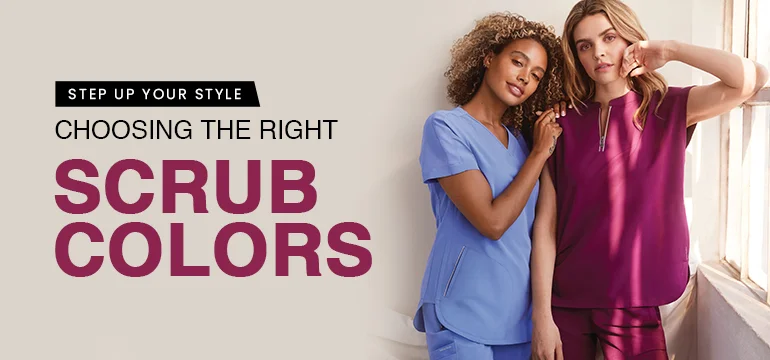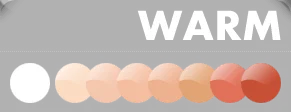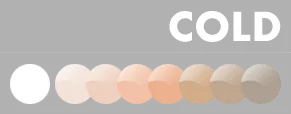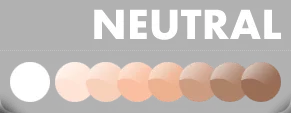
When choosing colors for your scrubs, its impact on our mind may not be the first thing to intrigue us. However, many researchers suggest that the color we choose has profound impact on our mindset subconsciously.
To understand the phenomenon better, it is important to look at the different colors beyond the scope of clothing and scrubs. You must have noticed that most stop or hazard signs are painted in red. The choice of color is not a personal presence, rather well thought out. The red color draws attention, increases excitement and gives an adrenaline rush. Similarly, the color green symbolizes nature, fertility and growth, where most eco-friendly projects have green logos. Furthermore, the recycling industry is also referred to as the green industry indicating the profound correlation between human cognition and colors.
Most people wonder, how color selection is relevant to our nursing uniforms.While this may come as a surprise, but the healthcare sector is now incorporating strategic color planning and becoming open to the idea of colored scrubs to foster relationship with patients, improve employee productivity and spread positivity in the environment.
Color psychology is the study of hues that is used as a determinant of human behavior. The color we choose has an influence on our perceptions improving the effectiveness of placebos. While colors have an influence on people, but the impact varies from person to person. Moreover, stimulants such as age, culture, sex, etc. also have an influence on how individuals perceive color.
Red scrubs: are seen as an emotionally intense color which denotes strength, danger, power, love, desire and passion. It is used for quick decision making and also increases respiration rate, increase blood pressure and improve metabolism.
Yellow scrubs: are said to be a spontaneous, yet unstable color. They are linked to intellect, joy, happiness, energy, and positivity, often used to grab attention
Blue scrubs: symbolize trust, loyalty, confidence, wisdom, truth and faith. It is also used to promote stability, cleanliness and technology. It is also known for suppressing appetite and increasing productivity.
Black has a lot of mystery and authority associated to it. It is associated with formality, elegance, death, fear and evil. Wearing black scrubs is known for creating an illusion of a slimmer, more polished appearance.
Orange scrubs: are extremely popular amongst the younger generation. It symbolizes fascination, creativity, attraction, determination, encouragement and simulation. It also increases oxygen to the brain and stimulates mental activity.
Have you ever wondered what green scrubs mean? Well, it is the color of nature with a healing power. The color symbolizes relaxation, fertility, growth, harmony and freshness. It is readily used to promote tranquility and safety
Purple scrubs: are often seen as the color of royalty, symbolizing luxury, dignity, ambition, wisdom, creativity, independence, and even a touch of magic.
White scrubs: symbolizes purity and faith, representing cleanliness and safety. It also symbolizes a clean slate promoting creativity.
Brown scrubs uniforms— including chocolate brown scrubs and dark brown scrubs— are often considered the “khakis” of the scrub world. Their neutral, earthy tone gives a professional, grounded appearance, perfect for healthcare professionals who want to project reliability and trustworthiness.
The color grey is often associated with gloominess and depression. Although grey scrubs are popular in the world of medicine as it gives a subtle and subdued look. However, grey scrubs can also trigger sadness and depression.
Teal is often linked to peace, healing and zen, which makes it ideal for the healthcare professionals looking for best scrub colors. Further, the teal color scrub is such that it doesn't allow stains to settle on the scrubs so easily. Hence, making it a safe and popular choice.
Often seen being flaunted during valentines, pink scrubs simply fantasize love, warmth and compassion in healthcare. They are an excellent option for nurses looking for best scrub colors as it is calming, soothing and nurturing
An alternative to red scrub color, burgundy is also a modern and upbeat choice that looks dressier and impressive.
Colors act as triggers for emotions and subconscious affecting the way people think, choices they make, and feel throughout the days. Therefore, the color psychology has a subtle impact on the behavior of nursing professionals when they interact with patients, peers, and technicians. Moreover, a few hospitals and pharmacies also leverage from color psychology to promote brand images, goals and messages. Choosing the right scrub colors can have a profound impact on your peers and patients and also adds to your professional appeal.
According to a study by Creighton University conducted in 1999, the uniform color helps in boosting confidence, increasing efficiency and creating a positive environment. Therefore, the right color can improve efficiency and simulate emotions.
The color an employee wears promotes calm and stability, but an important aspect that shouldn't go neglected is the state of mind. If a person is frustrated or agitated, the right color can make him calm. However, it cannot completely make a person positive or optimistic.
To give a better idea, here's how uniform color and employee performance are correlational.
According to the study, workplaces where employees wore blue or had blue offices tend to feel calm and were also hopeful about their work. This resulted in improved productivity, performance and engagement at large.
Similarly, black is linked with aggression, authority or power. Some people get a sense of intimidation, but it also enhances professionalism giving a superior look. Moreover, certain workplaces encourage their employees to wear black to enhance confidence.
Lastly, grey color is often associated with lethargy, passivity and disengagement. While it is not absolute, but grey uniforms are uninspiring.
The color of the scrubs you wear has a profound impact on the mood of patients. The green scrub, your favorite animal print or bright jackets is not only looks trendy and flattering for you, but also helps in building connection with your loved ones.
As per an article in Psychology Today, wearing bright colors affects the mood. Such colors tend to spread positivity, vibrancy, and moods.
While most healthcare professional desire to look their best at work, but it also takes a lot of confidence to sport a color. Therefore, if you are not comfortable with the spontaneous reaction of people, it is advised not to wear such colors.
As stated above, green is the symbol of growth and fertility. Therefore, a green scrub can enhance self-esteem and improve confidence. Other than that, in the healthcare sector, green is also used to relax patients.
Also, different colors evoke different emotions. For instance, orange is linked to high energy because of heat, harvest and fire. Yellow is also an energetic color symbolizing vivacity, youth and spontaneity, while red is the color for passion, courage and valor. Likewise, the different hues of blue have different emotions linked to them. Electric blue is associated with strength, medium blue with loyalty and friendship, and light blue with water and sky. However, wearing violet can result in feeling of lethargy making such scrubs a wrong choice to be worn around patients.
According to Roche, wearing colors in contrast to white can spread energy and bolster confidence. She added, “dressing with it is a much different experience than dressing in black. Color is like the sun, it's full of light and reflection. It's optimistic and fertile."
You must have heard people saying how pink suits them, while green doesn't look good at all. If you're wondering, "what color scrubs should I wear?" you might not be aware that there is a complete science behind choosing colors to enhance your skin tone.
In order to find your skin tone match, it is important to look beyond the skin exterior. The surface color of your skin can change due to medical condition, medication reaction or exposure to the sun. In reality, the skin tone is determined by the undertones that come through it.
Here are a few classifications for skin tones:
In order to determine your skin tone, make sure your skin is clean and no cosmetic or lotion is applied. Now, wash your face and wait for almost 15-30 minutes and wait for the redness settle. Now observe your skin tone in natural daylight as artificial light can alter the appearance of your skin undertones.
If you are finding the right skin tone, match from the area near your jawline instead of the cheeks. The cheeks are generally pigmented having natural blush. This disguises the real skin
Most of us are aware of our skin tone, but hardly a few have an idea about the undertones. The primary difference between the skin tone and undertone is that the skin tone is the shade and complexion of your skin, while undertones are the colors that natural comes through the skin affecting the color. Generally, undertones are classified as warn, neutral or cool.
Ways to determine undertone:

If you have warm skin tone, the colors that truly suit you are those that reflect nature. On the warm side of the color wheel, you should turn to red, peach, coral, orange, amber, gold, and yellow. You also should look great when you wear "warmer" versions of cool colors, like olive, moss, orchid, and violet-red. Neutrals including taupe, cappuccino, cream, and mushroom gray also complement your skin tone. Try avoiding chilly colors like icy blues or jewel tones like sapphire or amethyst because they can wash you out and make your skin look gray.

If you have cool skin, the colors that truly suit are on the cool end of the spectrum and are inspired by both the depths of the ocean and the depths of winter. Bright blues, emeralds, and deep purples will look great, along with frosty shades of lavender, ice blue, or pink. On the warm side, you can turn to ruby, bright rosy red or super-pale yellows. With neutrals, you can rock cool gray, bright white, and navy. Try to avoid orange, tomato red and strong yellows, which can clash with your skin completely.

As a neutral, you can wear anything on the color wheel - but it's typically best to go for softened or muted versions of a color instead of the brighter ones. Choose colors like dusty pink, jade green, cornsilk yellow, or lagoon blue. For neutral colors, turn to off-whites, coffee, mid-range grays, and black. Oversaturated colors like electric blue and magenta can overwhelm your neutral skin tone, but there's one big exception to this: never be afraid to wear a bright, true red — you will look amazing.
There are a handful of colors that will look great on any skin tone because offer a perfect balance of warm and cool that won't clash with your skin. Pure white goes great with everyone's skin. Light blush pink brightens any skin tone and brings out the natural glow of your face. Teal with a perfect mix of blue and green can be worn by anyone and is a great summer or winter shade. If you want to go dark, try eggplant purple, which acts like a neutral and accentuates your skin without overpowering it.
Medical professionals tend to buy scrub sets so that they can look impressive. However, this may look good initially, but gradually boredom starts to set in when you have to wear the same uniform day in and day out. Additionally, stains and spills can ruin the scrub pants. Therefore, to give a fresher look to your wardrobe without spending an arm and a leg, you can mix and match scrub colors. This approach not only revitalizes your uniform but also makes it easier to manage wear and tear on individual pieces.
When you purchase scrubs, make sure to buy them in solid dark colors such as deep purple, black, maroon, etc. the dark colors tend to absorb the stains better. This means, even if you have to throw a scrub top or pant, then you can easily match them with printed separates.
When you match a top with a printed bottom, there are high chances that the outfit may look like a mismatch. Therefore, to give a seamless look, try matching the pants with small prints. Moreover, make sure that the color of the top is present in the printed pants to create harmony.
It is important to be strategic when you are mixing different styles. For instance, it is advised to mix a loose fitting top with long sleeves to a flare leg scrub pant. Likewise, if your top is loose and pants are snug, then you will look heavier from the top and narrow from the bottom resulting in an unimpressive silhouette. Moreover, the cuts need to be similar when you match different scrub sets. In case your top has detailing, pair it with plain solid color pants to divert focus and enhances the appearance of the top.
If you are mixing plain colored tops and pants, it is advised to wear a pale colored top with a darker pant, or vice versa. If it is mandatory to wear a pale top and pant, be careful with the color selection and only pair colors that complement one another such as light blue and light pink. Moreover, the plain colors at times look horrible if they aren't chosen strategically. Thus, be careful with the choices you make.
Back in time, scrubs were only in white representing the color of cleanliness. Later in the early, 20th century, one influential doctor switched to green scrub as he thought it would be easier for the surgeon to see clearly during operations as per an article published in Today's Surgical Nurse.
While it is not evident that green scrubs got popular for the reason stated above, but green is ideal since it assists doctors to see better in the operating. This is mainly because green is the complimentary color of red on the color, making it easier for the surgeons to see through the blood.
There are primarily two reasons why physicians can see better with green:
This phenomenon takes place due to the white light containing all rainbow colors including green and blue. The red pathway gets tired out, resulting in the red vs. green pathway to signal the brain “green”.
According to Paola Bressan at the University of Padova, if a doctor looks at blue or green scrubs instead if white, the ghosts will start to blend in without causing distraction.
Thus, doctors may wear a variety of colored scrubs, but green is the best color option to assist them during surgeries.
When people are categorizing fashionable professions, nursing is certainly not one of them. The scrubs are mostly baggy with a boxy shaping that does not enhance the natural curves of the body. Therefore, if your career requires you to adorn scrubs, you have quite a few options to choose from. However, many platforms are retailing fashion scrubs that are more flattering than the boxy scrubs.
Colors have the ability to give an illusion of a slimmer, flattering silhouette. If you want to wear scrubs that make you look slimmer, here are a few colors you can adorn:
Black
It is believed that black makes you look thinner. You can wear scrubs in black to make yourself look thinner instantly. However, it is important to be strategic with the choices you make. If you are fat, then wear complete scrub sets in black. Similarly, if you just want to look thinner than you are, just wear black scrub pants to further enhance your curves.
It is advised not to wear black in day time as it will make you look unimpressive and dull. Moreover, you can also pair your black scrubs with nursing accessories to look trendy.
Mostly all dark colors can make you look skinny. They not only make you look thinner, but taller as well. Wear scrubs in shades like chocolate brown, navy blue, etc.
Bright shades including green, pink, yellow and red can also make you look thin. However, it is not necessary to adorn yourself completely in pink or red scrubs. You can either wear a red top or jacket with a muted color scrub pant. Moreover, single colored nursing dresses can also enhance your figure.
There is no need to wear monochromatic colors all the time, rather you can wear a combination of bright and dark colors to look slimmer. If you wear a dark pant, it is advised to wear a bright colored top or vice versa. Similarly, jackets in bright colors will make you look thin instantly
If your workplace is open to the idea of colored uniforms, you will have a variety of styles and color options to choose from while finding scrubs. However, being strategic with the choices you make can further add to your personality.
While many nursing professionals do not realize, but color therapy plays an important role on your overall performance. Moreover, it enhances the mood and spreads optimism and positivity.
| Colors | Do's | Don'ts | |
|---|---|---|---|
| Yellow | Pair your yellow scrubs with bright yellow scrub tops for a fresher look. Yellow is a color of energy, optimism, and sunlight. This is the positivity we all need to go through the toughest shift. | When you are wearing, don't try to mix and match different bright colors. If you wear a brighter shade of yellow make sure the other part of your scrubs is paler in color, such as a dark green. Moreover, don't confuse 'sunny' yellow with 'caution' yellow! |
|
| Blue | Consider your blue scrub pant to be your denim wear and pair it with fun colors that suit your mood. With dark blue pants, you can wear violet and light green scrub tops. Blue is associated with calmness making it perfect to wear on a busy day. |
Don't just select any shade top match with your blue scrub pants. For instance, deep orange represents excitement, but bright orange gives a cheap look. | |
| Black | Black is the color that complements all shades and hues. So, experiment, flaunt and impress! |
Don't go overboard with black. Wearing too much black can give feelings of emptiness and depression to the nurses and patients in the surrounding. | |
| Green | Add green to your workwear. Green is associated with growth, vitality and openness and can positively effect on your surroundings. Bright green tends to look great with brown, dark blue and more muted shades of red. |
Don't choose earthy tones excessively as it ignite feelings of sadness. | |
| Red | Different hues of red like rosy red, soft pink or violet have a calming effect and pair with different colors easily. With deeper shades of red, you can wear light colors such as light blue, light green or light yellow. |
Do not wear highly saturated blue-red since it can cause anger and frustration. | |
| White | White uniform signals crisp, clean professionalism to your patients. White also imparts purity and brightness of spirit. | Do not buy a uniform that is blue-white as it can look sterile. | |
| Brown | Opting for brown scrubs is ideal for creating a sense of reliability and groundedness in healthcare environments. This color is excellent for concealing stains and maintaining a professional appearance over long shifts.
Brown's earthy tone supports a calm and comfortable atmosphere, making it suitable for both staff and patients. |
Avoid selecting brown scrubs if working in a setting that benefits from brighter colors, which can enhance mood and alertness. Brown may be perceived as too subdued or somber in pediatric or high-energy environments, potentially dampening the lively atmosphere. It's less effective for distinguishing staff roles at a glance. |
|
| Grey | Grey scrubs are a versatile choice, offering a modern, sleek look that suits various healthcare settings. This color is excellent for hiding wear while projecting professionalism and neutrality. Grey facilitates coordination with other colors, aiding in team uniformity without sacrificing individuality. It's also practical for long shifts, masking stains effectively. | Avoid grey scrubs if your environment thrives on vibrancy and energy, as grey might appear too muted and could potentially dampen spirits. In settings where differentiation among roles is crucial, grey's neutrality could confuse rather than clarify. It may also seem too industrial or impersonal in more intimate care settings. | |
| Teal | Choosing teal scrubs can brighten healthcare settings with a splash of color that's both calming and refreshing. Teal represents cleanliness and serenity, potentially reducing stress for patients and staff. It's distinctive enough to stand out, yet versatile for various skin tones, enhancing the wearer's professional appearance. | Avoid teal scrubs in environments where more subdued colors are preferred for maintaining a conservative or uniform appearance. While teal is visually appealing, it might be too vibrant for some settings, potentially distracting in highly clinical or serious atmospheres. Additionally, it could clash with existing decor or color-coded uniform systems. | |
| Orange | Orange scrubs are perfect for injecting energy and warmth into healthcare environments. This vibrant color can boost morale, stimulate conversation, and make staff easily noticeable, which is especially beneficial in fast-paced settings. Orange reflects light well, enhancing visibility and safety, and can positively influence mood and dynamics. |
Avoid orange scrubs if the goal is to maintain a calm, subdued atmosphere, as its vibrancy can be overly stimulating in settings requiring tranquility or focus. In environments where color coding is critical for role identification, orange may not fit the established palette, leading to confusion. It might also overshadow professional decorum. |
|
| Pink | Pink scrubs are an excellent choice for creating a nurturing, comforting atmosphere in healthcare settings. This color is associated with compassion and care, potentially easing patient anxiety. Pink's soft hue is visually appealing and can brighten the work environment, promoting a positive, friendly vibe among staff and patients alike. | Avoid pink scrubs in settings where a more neutral or traditional color scheme is preferred to convey utmost professionalism and seriousness. While pink can foster a warm, inviting atmosphere, it might not be suitable for all departments, especially where a more authoritative presence is required or in gender-neutral environments seeking to avoid traditional color stereotypes. |
Most nursing professionals consider it a tedious task to take adequate care of their nursing scrubs. The lifespan of your colored scrubs can be increased if you follow certain care instructions making your uniforms long lasting.
It needs to be understood that you shouldn't wash your nursing scrubs like you wash your regular clothes. Your uniforms require extra care with disinfecting for your next duty. Here are a few tips you can follow